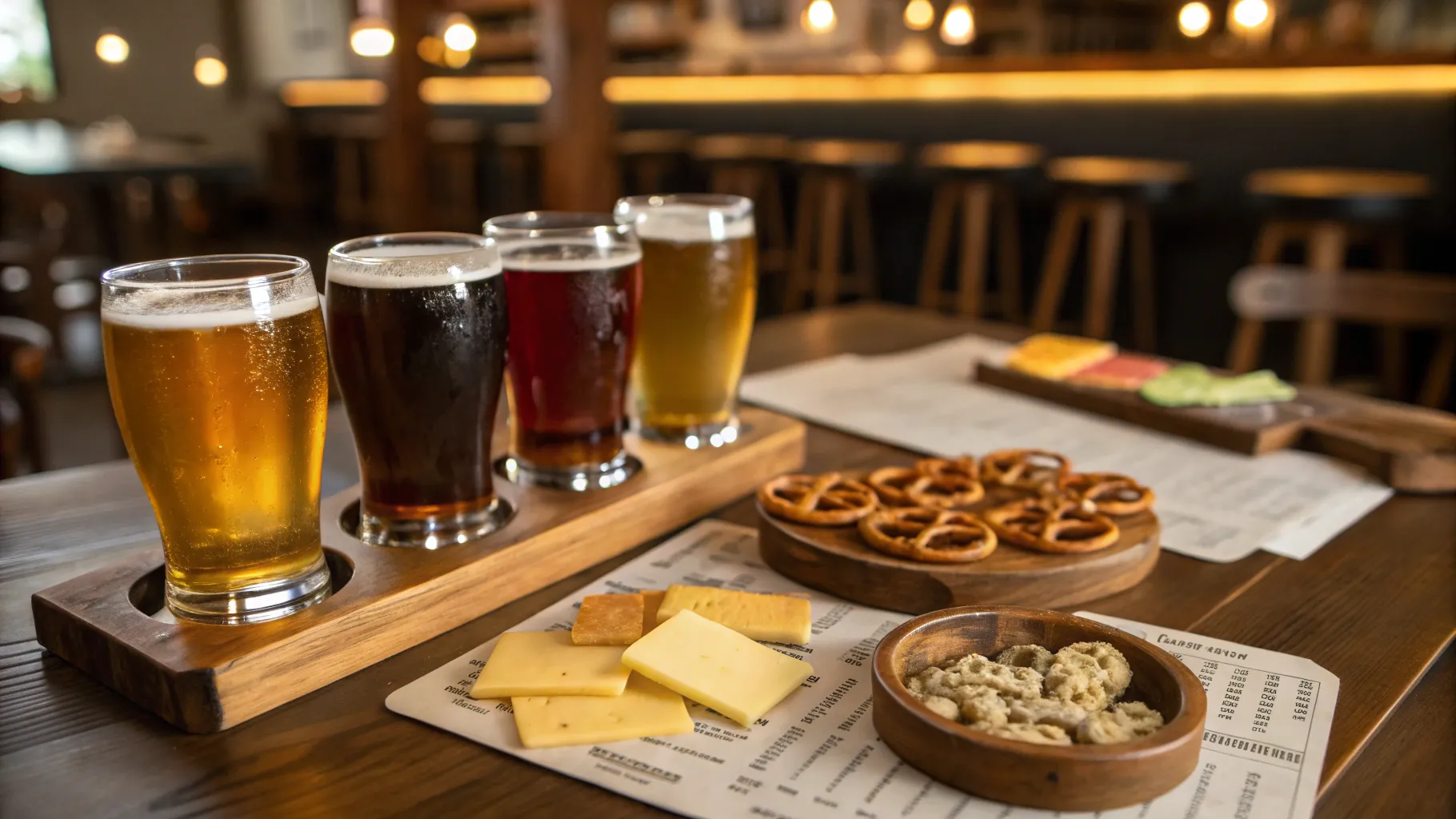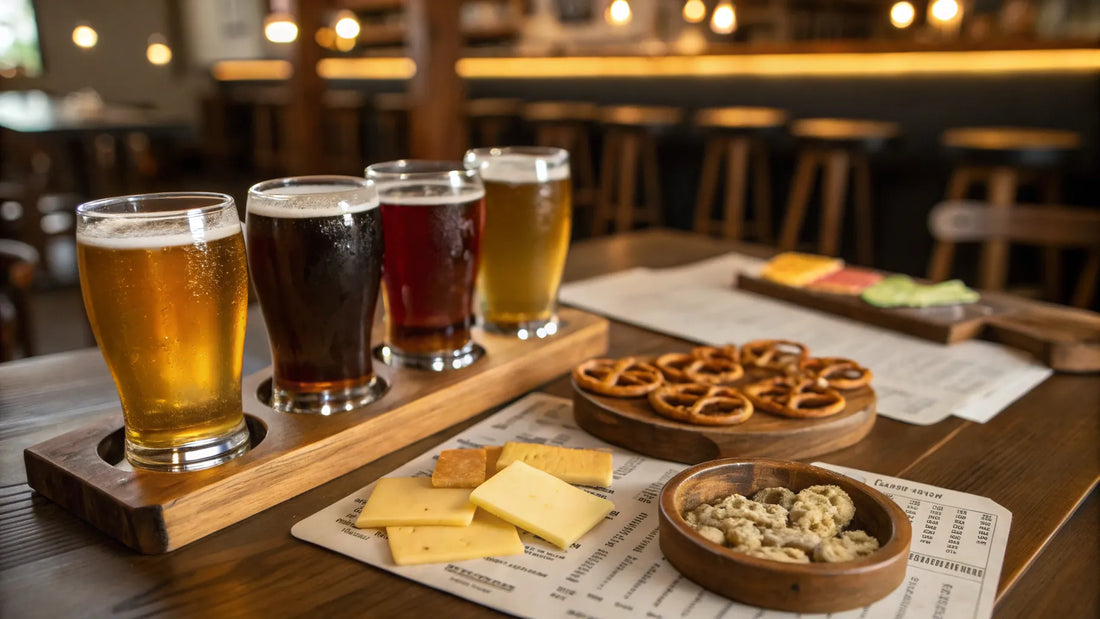How to Become a Better Beer Taster – 10 Tips!

Welcome, beer lovers! In this blog, I share my top 10 tips to elevate your beer tasting skills to the next level. Whether you're a seasoned pro or just starting out, these tips will help you enjoy every sip you take even more.
Introduction 🍻
Welcome to the world of beer tasting! Here we delve deeper into the art of tasting beer. It's not just a drink; it's an experience. From the aroma to the flavor, every aspect matters. Let's discover together how to get the most out of every sip.
What makes beer tasting so special?
Beer tasting goes beyond just drinking. It is a combination of science, art, and personal preference. You learn not only about the different types of beers but also about the ingredients and the techniques used in brewing. All of this helps you gain a better understanding of beer.
The right glassware 🍺
Choosing the right glass is crucial for an optimal beer tasting. Each beer has its own ideal glass that highlights the aromas and flavors. The right glassware can significantly enhance the experience.
Why is glassware important?
The glass influences how the aromas develop and how you taste the beer. A good glass retains the scent and ensures that you can fully enjoy the flavors. A wide opening allows the aromas to escape, while a narrower top helps to hold the scents.
Types of glasses for different beers
- Pilsner glass: Perfect for light beers such as pilsners and lagers.
- Wheat Beer Glass: Ideal for wheat beers, with a wide opening for the foam head.
- Stemmed glass: Great for heavier beers like stouts and porters.
The right temperature 🌡️
The temperature at which you serve your beer has a significant impact on the taste experience. Each type of beer is best appreciated at a specific temperature.
General guidelines for serving temperatures
- Light beers: 4-6°C
- Amber beers: 6-8°C
- Dark beers: 10-12°C
It is important to remember that it is better to serve beer slightly colder than too warm. As the beer warms up, the flavors come out more, giving you the chance to discover different aromas.
How to pour the beer 🍻
The way you pour beer can significantly influence the taste and aromas. A good pouring technique ensures that the flavors develop well.
The correct pouring technique
- Hold the glass at a 45-degree angle.
- Start pouring and let the beer slowly fill the glass.
- When the glass is almost full, straighten the glass to create a nice foam head.
By following this technique, you ensure that the aromas remain in the glass and that you can taste the beer optimally.
Use the right techniques 🔍
During beer tasting, there are various techniques you can apply to better understand the flavors. These techniques help you train your senses and get more out of your beer tasting.
Effective testing techniques
- The bloodhound technique: Inhale sharply three times after swirling the beer in the glass. This helps you to perceive the aromas better.
- Experiment with an open mind: Don't let yourself be limited by preconceived expectations. Try to discover new flavors and aromas.
By applying different techniques, you develop a better understanding of the complex flavors present in each beer. This will help you refine your taste buds and elevate your beer tasting to a higher level.
Read the label 📜
One of the first steps towards becoming a better beer taster is reading the label. This can tell you a lot about what you are going to taste. What kind of malt has been used? What hop varieties are included? These are all clues that help you understand the flavors and aromas.
Take the time to study the label before taking a sip. Look at the descriptions of the flavors and the ingredients used. This can help you shape your expectations and prepare your senses for what is to come.
"It is also useful to know that some breweries carefully design their labels to give you an idea of the intended flavor experience. So, read the label and let it guide you in your tasting!"
Explore the ingredients 🌾
Ingredients are the core of every beer. By learning more about the different types of hops, grains, and yeasts, you can better understand the complexity of beer. Hops, for example, can vary from citrusy to earthy flavors, depending on the type.
"Try visiting a local brewery and ask about the ingredients of their beers. They are often happy to share what goes into their creations. You can even buy some hops or grains at a specialty store and smell and taste them yourself to understand how they contribute to the final flavor of the beer."
By gaining this knowledge, you can better understand what you are tasting and why certain flavors come forward. This will certainly enrich your beer tasting experience.
Learn the brewing method 🍺
The brewing method has a significant influence on the taste and aroma of beer. There are various techniques that brewers use, such as decoction brewing or dry hopping, which can create unique flavors. By learning more about these processes, you can better understand where the flavors come from.
Take the time to read up on the basic principles of brewing. This can help you better understand the descriptions on labels and in your beer tasting notes. If you know how different techniques affect the flavors, you can apply that knowledge during tasting.
"Also try to ask about the brewing method at a brewery. They can often tell you which techniques they use and how that affects the flavors. This makes your experience even more authentic."
Talk to others about beer 🗣️
A great way to improve your beer tasting skills is by talking to others about their experiences. Everyone has their own taste and perspective, and by listening to what others have to say, you can gain new insights and ideas.
Share your experiences on platforms like Untappd, where you can see what others think of the same beer. This can help you refine your own taste and expand your vocabulary.
Organize a beer tasting with friends or join a local beer club. This provides a great opportunity to taste and discuss different beers, and you learn from the opinions of others.
Try different flavors 🍊
To become a better beer taster, it is important to expand your palate. Try different styles and flavors that you might not normally choose. This not only helps you discover new beers but also diversifies your vocabulary and descriptions.
Don't just go for the popular beers; dare to experiment with lesser-known styles as well. This can help you discover unique flavors that you haven't experienced before.
And don't forget to also try other drinks, such as wines or spirits. Many of the flavors you find in beer can also be found in these drinks, which can help you develop a broader understanding of flavors.
Avoid clichés 🚫
Clichés are the enemy of a good beer tasting. The use of standard terms like "bitter" or "fruity" adds little to your experience. Instead, it is important to be more specific.
When you describe a flavor, ask yourself: which specific taste or aroma comes forward? Is it a citrusy bitterness or a resinous one? This not only helps you but also others to get a better picture of what you are tasting.
Try to diversify your language use. Instead of saying that a beer is "sweet," you can compare it to a specific fruit or candy. This makes your description more vivid and authentic.
Summary of the tips 📋
To become a better beer taster, there are some essential tips to keep in mind. First, choose the right glassware to optimally perceive the aromas. Additionally, it is crucial to serve your beer at the right temperature for the best tasting experience.
The pouring technique also plays a big role; make sure you don't fill the glass too full. Don't forget to explore the ingredients and brewing method, as these have a direct impact on the flavors you taste.
Talk to others about their beer tasting experiences and try different flavors to expand your own palate. Finally, avoid clichés and be specific in your descriptions. This will help you not only improve your own experiences but also inspire others.
Encouragement to interact 💬
"I invite you to share your own experiences and tips for beer tasting with us! Have you had a moment when you discovered something new in a beer? Or do you have a particular flavor that you can now describe better? Let us know in the comments below!"
"Your insights can not only help you, but also other beer lovers on their journey to better beer tasting. Let's expand the world of beer exploration together. Cheers!"





